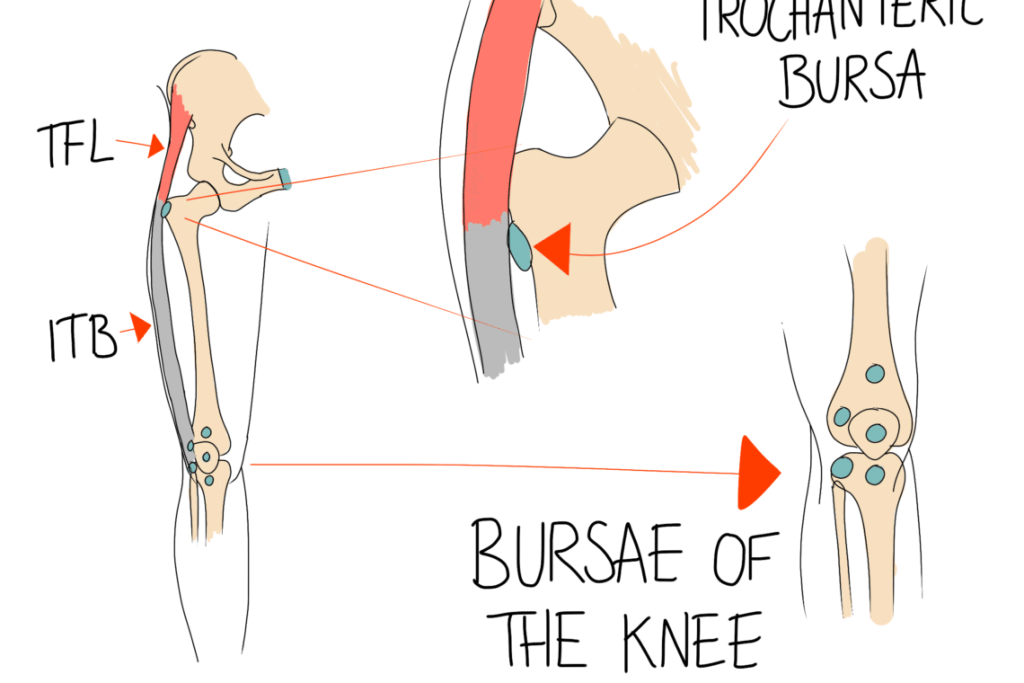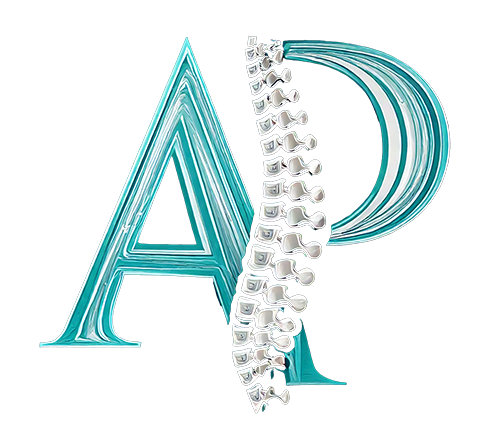Bursitis
Bursitis means “inflamed bursa”. Bursae are little fatty sacs called found all over the body. Each bursa sits between tissues, often a tendon and a bone, that would otherwise rub together. Their role is to prevent injury by friction, but sometimes they become irritated themselves.
How it Happens
Bursae tend to become inflamed from excess pressure or friction, which can be internal or external.
Internal friction usually comes from a tight muscle repeatedly rubbing against the bursa. Pain in this case could be in both the muscle and bursa. External pressure is often behavioural, for example sitting in such a way that a bursa is under continual pressure.
More Common Examples
There are too many bursae to count, but some come up more than others.

Trochanteric Bursitis
At the top of the thigh bone there is a bony lump called the greater trochanter. Some people call this their hip, although it is below the hip joint. The IT band and the muscle that it blends with (TFL) run over this prominence. The ITB is usually relatively tight, as it plays a role in stabilising the knee. But if it becomes too tight and puts too much pressure on the bursa, you can develop trochanteric bursitis.
Due to the relationship with the knee, treatment might involve more work to the knee or even ankle than to the painful area itself.
Patella Bursitis
There are two bursae around the knee cap that are quite prone to irritation. The infrapatellar bursa sits just below the knee cap, and the prepatella bursa is in front of it. When these are inflamed, the quadriceps are often part of the problem. The knee cap actually sits within the quadriceps tendon, so tightness in the quads can make the kneecap move inefficiently.
When the cause of this is tightness through the quads, additional problems may arise. The additional pressure on the knee cap can cause friction within the joint too. If this persists, the cartilage on the back of the knee cap may become irritated. Given long enough, it may also develop arthritis.
Olecranon Bursitis
The olecranon is the name for the point of your elbow. Bursitis here is less associated with a tight muscle, and more commonly caused by external pressure. The other name for this bursitis is “student’s elbow”, as leaning the elbow on a desk is associated with developing it. As the bursa is so close to the skin, it can look quite dramatic when inflamed. A large lump may develop, which is not painful in every case.
Osteopathy and Bursitis
Osteopaths can help with your tight muscles. When assessing your bursitis, we will look for patterns in neighbouring areas. It may be the case that the long term solution to your pain is to address a muscle or joint elsewhere that isn’t working properly.

